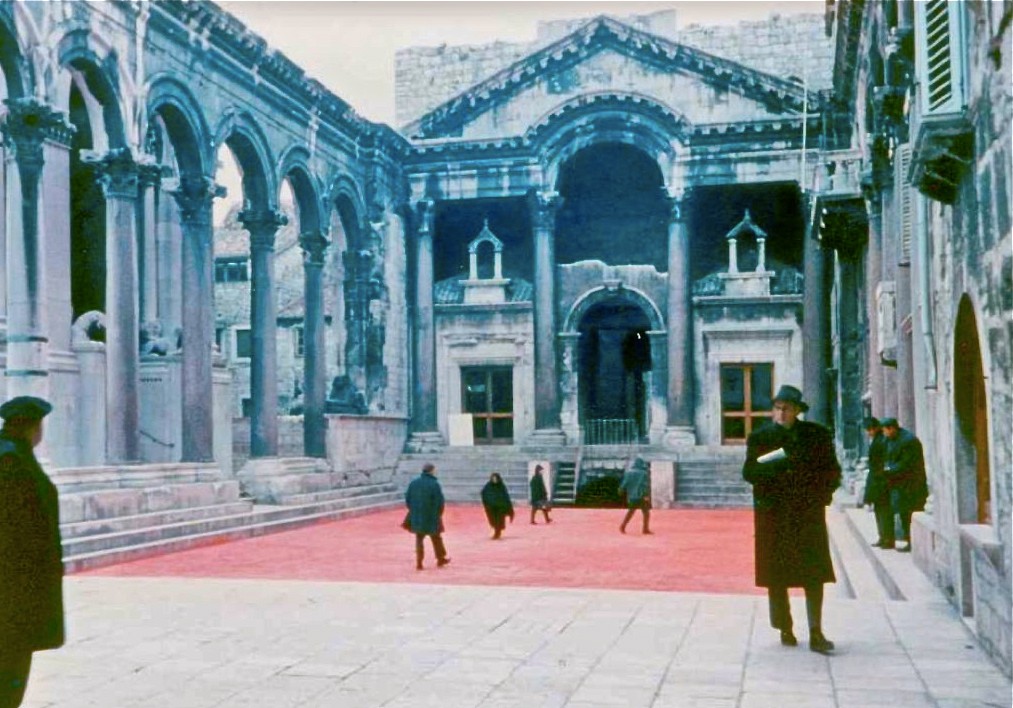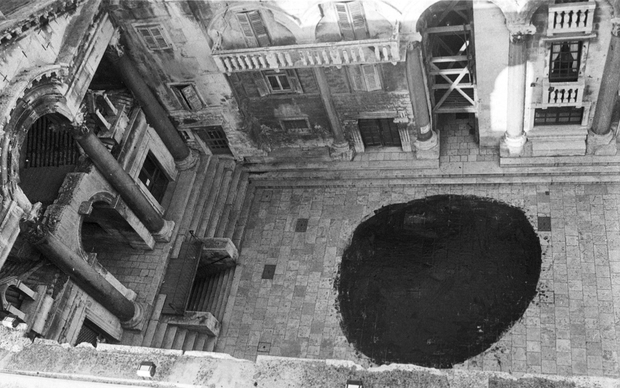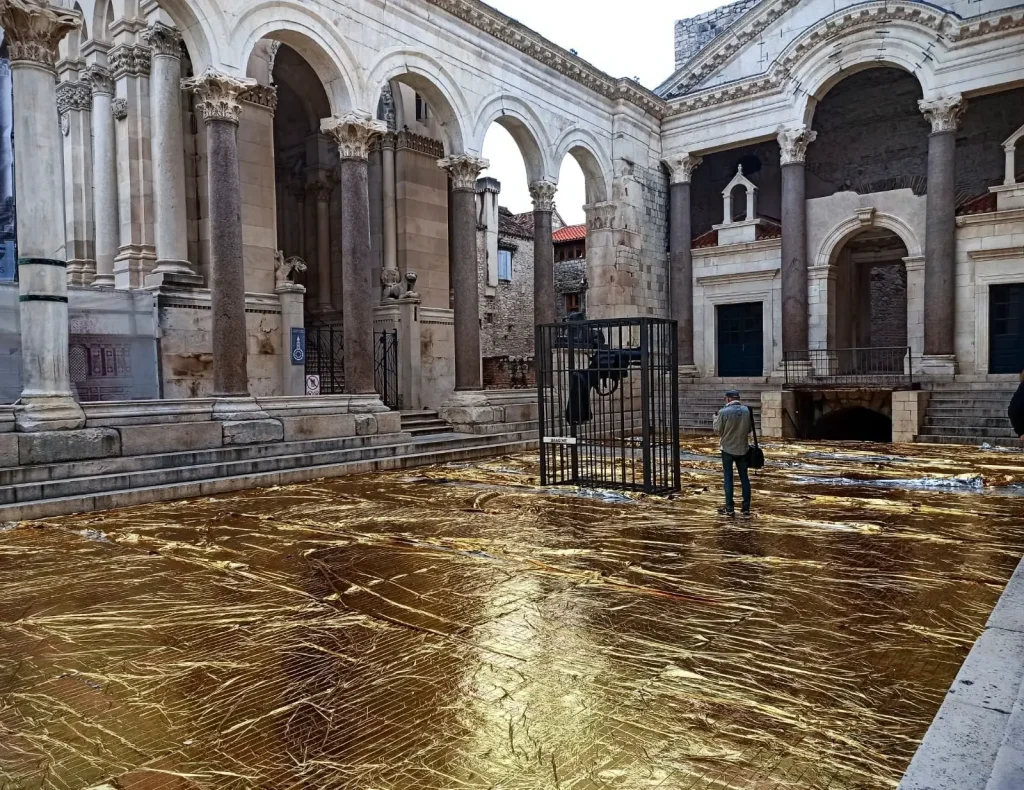The Peristil Square in Split was covered in gold yesterday as part of an art intervention that also features an oversized gun locked in a gigantic cage. As reported by Slobodna Dalmacija, a plaque is displayed on the cage, inscribed with a short message – Imagine.
Created by Swiss-based gallerist Miloš Glavurtić, the artwork is named ‘Set the Bird Free, Lock Up the Weapons’. The pacifist message of the installation is reinforced with the sheet of gold covering the entire surface of the square, possibly alluding to the fact that wars are a lucrative business and are started with financial profit as a driving force.
The art installation is inspired by an earlier work of Croatian conceptual artist Vladimir Dodig Trokut, who in 1991 displayed a gun locked up in a bird cage, and titled the installation ‘The Songbirds’ Song’.
The golden attire is only the latest in line of many art interventions staged at Peristil as a means of protest against various social and political affairs.
Arguably the most famous event of its kind that took place on the square, the legendary Red Peristil was a daring act of a group of Split college students led by artist Pavle Dulčić. In 1968, they painted the entire square red, causing a scandal in the local community.
 Red Peristil / Source: Petar Grimani, Facebook
Red Peristil / Source: Petar Grimani, Facebook
Seen as an act of vandalism at the time and condemned as a show of disrespect of cultural heritage, the act was later recognised as having artistic quality and is nowadays remembered as one of the first art interventions in these parts.
Twenty years later, Peristil turned green in an intervention staged by multimedia artist Ante Kuštre. Unlike his predecessors, Kuštre didn’t use paint to create his Green Peristil, but covered the square in green panels to raise awareness of environmental issues and bring attention to a deficit of green spaces in the city of Split.
On January 11th 1998, artist Igor Grubić marked the 30th anniversary of the Red Peristil with a work of his own. In the early hours of the morning, Grubić painted the square with a six-metre wide blotch of black.
The artist taped a note on the door of the Tourist Board office, saying: ‘In honour of the Red Peristil group 30 years later. Like a magic mirror, Peristil reflects the state of social consciousness. Black Peristil’.
 Igor Grubic, Black Peristil, 1998
Igor Grubic, Black Peristil, 1998
At the time, it wasn’t known who was responsible for the act, until Grubić went public months later as the author of the work that was meant to contrast ‘red history’ against ‘the dark present’.
The Peristil of Light was an ambient installation put up on two occasions, on Christmas 1991 and on Christmas 1997, by the painter Alieta Monas. It was a square of light that was placed on the northwest tower of Diocletian’s Palace, together with a round piece of red cloth.
The legendary Red Peristil seems to have been a source of inspiration for many, including the artist Petar Grimani who marked the 40th anniversary of the controversial work by launching 40 flares in the main courtyard of Diocletian’s Palace. Named the Flying Peristil by the media, the action had the space lit red for a short period of time.
In 2009, Torcida staged a protest of their own, covering the square with an enormous yellow plastic bag inscribed with the word ‘Kodeks’ in blue, altogether reminiscent of shopping bags specific to the company Kerum.
The action was meant as a protest against ‘Kerumisation of Hajduk’, i.e. entrepreneur and then Mayor of Split Željko Kerum installing his acquaintances in high positions in Hajduk management.
Dubbed Yellow Peristil by the media, the intervention was condemned by the local authorities, with the mayor stating it wasn’t an art installation but a work of extremists helping the opposition to bring down the city leaders. Torcida in turn stated they were no one’s puppet, but only wanted for the leading people of Hajduk to be selected on the basis of merit and expertise.
Next we have the Glass Peristil, a project that took place in the virtual world instead on the Split square. It was designed by art historian and artist Nikola Bojić, who in 2008 anonymously shared a project with the media, signed only as Majorian 458. It was an imaginary architectural project which envisaged construction of a commercial and residential building made of glass on the Peristil square, complete with helipads in the Vestibule and underground garages in the Diocletian’s Cellars, were connected to the Peristyle by escalators.
Even though the project obviously wasn’t real and was meant to start a discussion about the need of putting culture before profit when designing public spaces, sensationalist headlines sent the public into a frenzy, and the work was called a ‘terrorist attack on public space, cultural monuments and the historic urban environment’.
And finally, we’re back where we started, with gold being the latest colour to adorn the Peristil Square.








